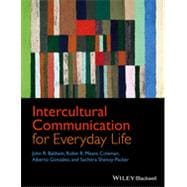- Provides a thorough introduction to inter- and cross-cultural concepts for beginning students with a focus on practical application and social action
- Defines “communication” broadly using authors from a variety of sub disciplines and incorporating scientific, humanistic, and critical theory
- Constructs a complex version of culture using examples from around the world that represent a variety of differences, including age, sex, race, religion, and sexual orientation
- Promotes civic engagement with cues toward individual intercultural effectiveness and giving back to the community in socially relevant ways
- Weaves pedagogy throughout the text with student-centered examples, text boxes, applications, critical thinking questions, a glossary of key terms, and online resources for students and instructors
- Online resources for students and instructors available upon publication at www.wiley.com/go/baldwin








